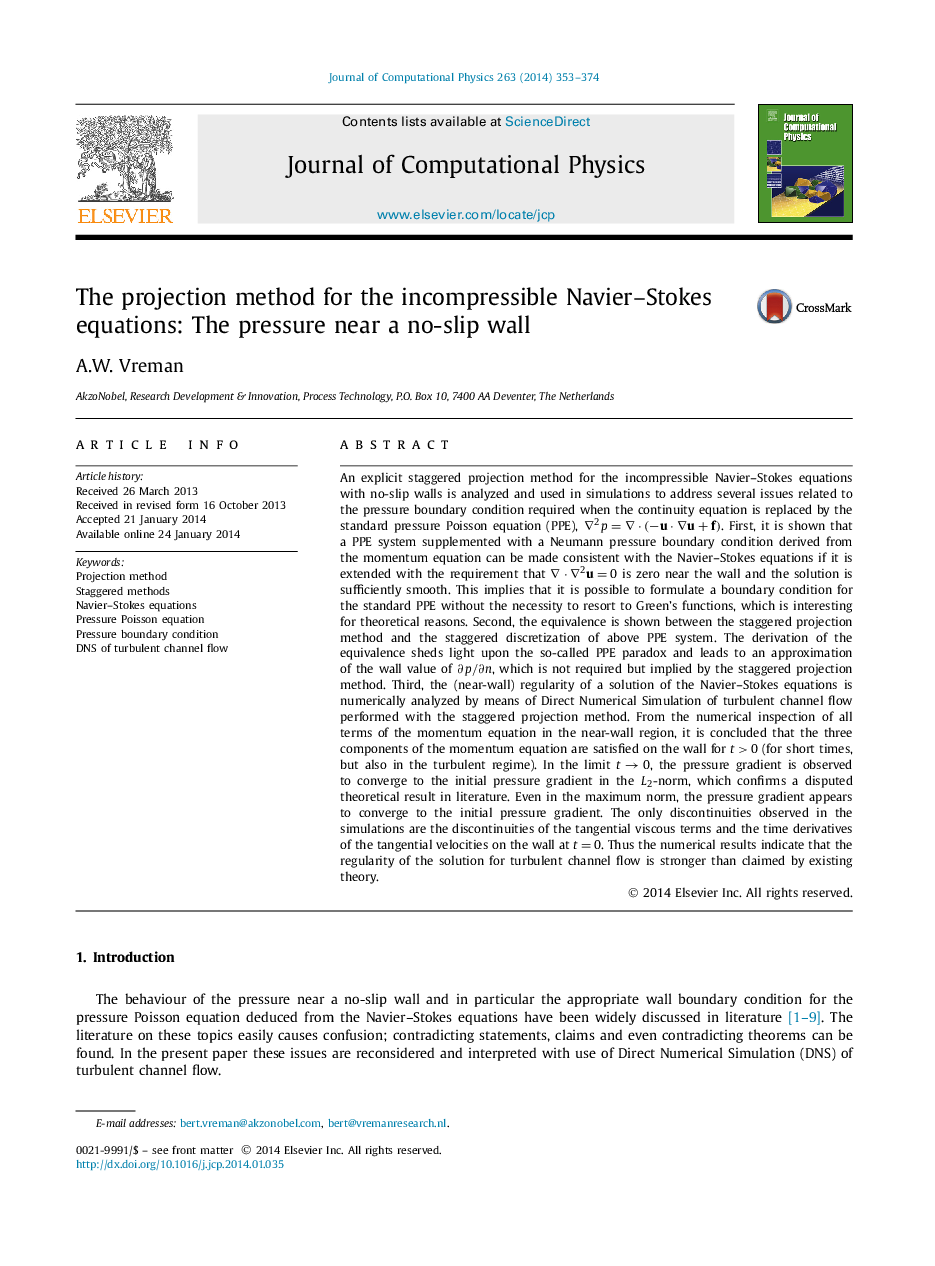| کد مقاله | کد نشریه | سال انتشار | مقاله انگلیسی | نسخه تمام متن |
|---|---|---|---|---|
| 6932786 | 867711 | 2014 | 22 صفحه PDF | دانلود رایگان |
عنوان انگلیسی مقاله ISI
The projection method for the incompressible Navier-Stokes equations: The pressure near a no-slip wall
ترجمه فارسی عنوان
روش پیش بینی برای معادلات نایبر-استوکس: فشار در نزدیکی دیوار بدون لغزش
دانلود مقاله + سفارش ترجمه
دانلود مقاله ISI انگلیسی
رایگان برای ایرانیان
کلمات کلیدی
موضوعات مرتبط
مهندسی و علوم پایه
مهندسی کامپیوتر
نرم افزارهای علوم کامپیوتر
چکیده انگلیسی
An explicit staggered projection method for the incompressible Navier-Stokes equations with no-slip walls is analyzed and used in simulations to address several issues related to the pressure boundary condition required when the continuity equation is replaced by the standard pressure Poisson equation (PPE), â2p=ââ
(âuâ
âu+f). First, it is shown that a PPE system supplemented with a Neumann pressure boundary condition derived from the momentum equation can be made consistent with the Navier-Stokes equations if it is extended with the requirement that ââ
â2u=0 is zero near the wall and the solution is sufficiently smooth. This implies that it is possible to formulate a boundary condition for the standard PPE without the necessity to resort to Green's functions, which is interesting for theoretical reasons. Second, the equivalence is shown between the staggered projection method and the staggered discretization of above PPE system. The derivation of the equivalence sheds light upon the so-called PPE paradox and leads to an approximation of the wall value of âp/ân, which is not required but implied by the staggered projection method. Third, the (near-wall) regularity of a solution of the Navier-Stokes equations is numerically analyzed by means of Direct Numerical Simulation of turbulent channel flow performed with the staggered projection method. From the numerical inspection of all terms of the momentum equation in the near-wall region, it is concluded that the three components of the momentum equation are satisfied on the wall for t>0 (for short times, but also in the turbulent regime). In the limit tâ0, the pressure gradient is observed to converge to the initial pressure gradient in the L2-norm, which confirms a disputed theoretical result in literature. Even in the maximum norm, the pressure gradient appears to converge to the initial pressure gradient. The only discontinuities observed in the simulations are the discontinuities of the tangential viscous terms and the time derivatives of the tangential velocities on the wall at t=0. Thus the numerical results indicate that the regularity of the solution for turbulent channel flow is stronger than claimed by existing theory.
ناشر
Database: Elsevier - ScienceDirect (ساینس دایرکت)
Journal: Journal of Computational Physics - Volume 263, 15 April 2014, Pages 353-374
Journal: Journal of Computational Physics - Volume 263, 15 April 2014, Pages 353-374
نویسندگان
A.W. Vreman,
